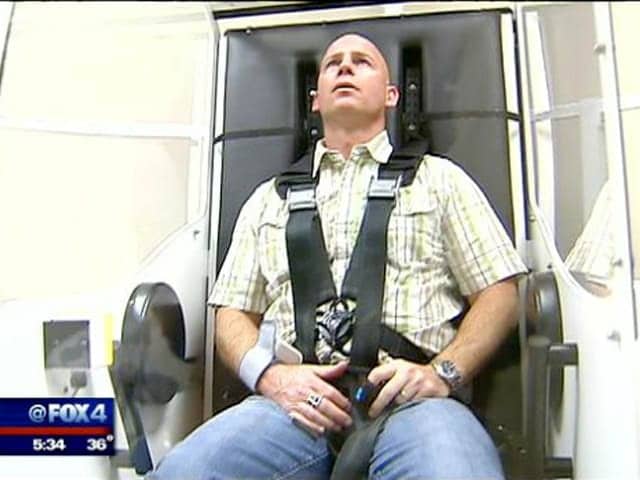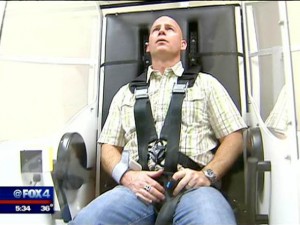Despite a mile 3-year decrease, incidences of traumatic brain injury among American military personnel remains high, with 27,000 new cases reported last year. Dallas-based Carrick Brain Center is helping to heal those injuries with sometimes “unorthodox” treatments. Whatever the tactics of these non-invasive approaches, patients are lauding the results.
Fox news affiliate KDFW Fox 4 recently reported about several Carrick patients and their treatment on the stations’s website. The site summed the injury and treatment of retired SEAL Sr. Chief Mike Day, who reportedly suffers both visible and invisible wounds as the result of a 2007 battle with al-Qaida operatives.
Day says he was shot 27 times after engaging in a gun battle with four enemy combatants, leaving him wounded in both legs, both arms, his abdomen, buttocks, scrotum, left thumb, and right scapula.
He was also knocked unconscious by a grenade blast during the fight.
“I look back on that and it just completely amazes me that I walked out of that house, which I did,” Day says. “I walked out of the house. I walked to the helicopter.”
Day’s brain sustained damage from the engagement, however, and symptoms persisted for 7 years.
“About a year and a half period, I slept about an hour a night, and at one point, I thought I was going mentally insane because of the sleep deprivation,” Day says.
Day sought treatment at Carrick Brain Center in Dallas, and reported that after his second week of treatment he was sleeping about 5 hours a night with fewer interruptions.
“If you’re not sleeping, your brain is not healing,” said Dr. Cagan Randall. “Your brain needs sleep.”
Randall says one of the tools in his treatment box resembles an amusement right called the Ovard.
“That chair moves in sequence and pattern all to the patient’s deficiency, so we can stimulate their brain specific to the patient’s needs.”
Randall says all the symptoms of traumatic brain injury and PTSD go back to a very specific area of the brain, and directing therapy there allows the brain to heal itself, without operations or drugs.
One of the key symptoms doctors see is lack of balance.
“If we can determine the un-stabilization of the eye, then what we can do is attach a therapy to it that will stabilize the eye so that as I move my head in any plane, I can still maintain eye fixation on you, which is incredibly important in your day to day life.”
Now, both men are dedicated to helping other veterans.
“My job before used to be finding bad guys and doing terrible things to them,” said Day. “I was pretty good at it. My new life’s mission is to find people that need help and help as many people as I can.”
Day says aside from improved sleep, his blood pressure has also gone down, and he’s so impressed with the therapy he’s participating in a triathlon to raise money so other veterans can have the same experience.
Randall says so far, private donations and small investments by veteran organizations are helping pay for the clinical trials.
He’s hoping to have enough clinical data soon to see his approach go mainstream.
[Source: KDFW Fox 4]





